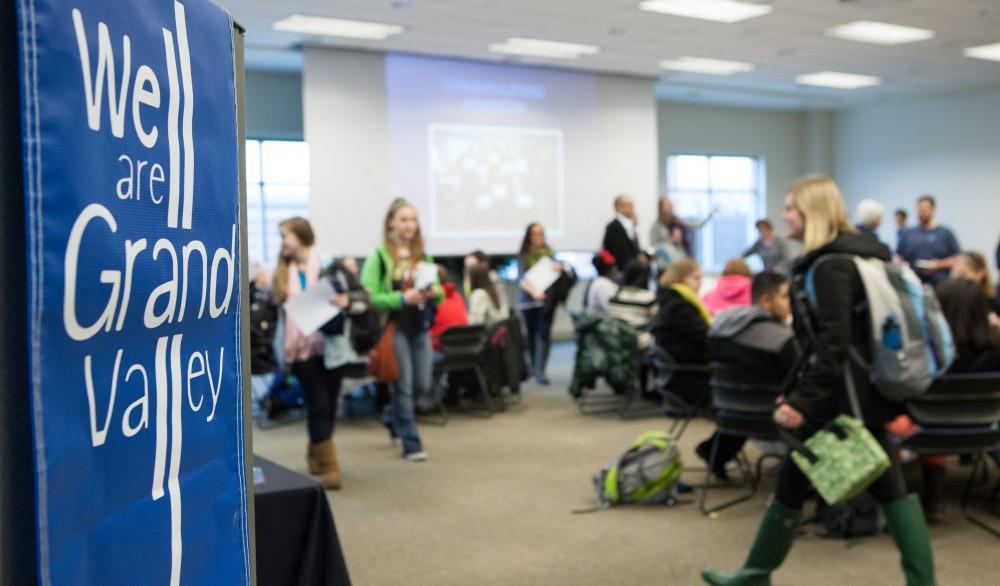GVSU re-certified for Environmental Stewardship Program

GVL / Courtesy – GVSU University Communications
Jan 5, 2015
Grand Valley State University continues to be a leader in sustainability and environmentally-friendly practices. In 2010, GVSU demonstrated its commitment to innovation when it became the first public university to be certified by the Michigan Turfgrass Environmental Stewardship Program (MTESP). GVSU was recognized for re-certification on Oct. 17, though the program was never meant to be applied at the magnitude it was.
“This program was originally set up for golf courses,” said Ken Stanton, grounds supervisor at GVSU. “I took a look at it and wondered if we could do it at the level of a university.”
Stanton said it made sense to initiate this practice since GVSU was already involved in environmental issues. According to Stanton, when he submitted the certification request, the representative from the MTESP was skeptical that GVSU would be able to adhere to the standards required on such a large scale.
In order to be certified under the program, GVSU had to meet the standards for nine different components, which included emergency response plans, Turfgrass irrigation, fuel storage systems and pesticide handling and application.
“You have to hit the nail on the head with every one of them,” Stanton said. “This is an all or nothing program so it represents the best management practices.”
Stanton said he knew the process required an intense work ethic, but not every module required massive changes or upgrades and the MTESP was present throughout. After a site evaluation, they worked with Facilities Services to develop an action plan. Some of the components were as simple as making a few changes, while other projects were quite a bit larger.
The largest of the projects involved with re-certification was creating new storage tanks for de-icing fluid. GVSU started storing de-icing fluid in 1999, but as the university grew, the single tank was inadequate to meet usage needs, and its environmental integrity was not ideal.
“Containment was just a wood structure,” Stanton said. “If there was a leak, it wouldn’t hold it; it would go to a drain. Now, the wooden structure has been replaced with concrete, and the tanks have a double wall to prevent leaks, as well as better dispensing systems.”
Although the $100,000 price tag for the project was quite large, compared to the price of a spill or environmental disaster GVSU is saving money and enhancing environmental awareness.
“It’s an investment in our department taking care of the campus,” Stanton said. “This represents the best way to handle this material in a responsible manner.”
“When I found out what was involved with this, I knew I would need the university’s support,” Stanton said.
Many other university departments worked with facilities to complete the project in record time. Certification is usually a three-year-process, but GVSU completed the requirements in just two years.
“There was a huge investment of my time and energy, but I was driven to get it done and succeed,” Stanton said. “We accomplished a lot. Not only did we bring the university into compliance, but we accomplished something meaningful and beneficial for the university and environment.”





















